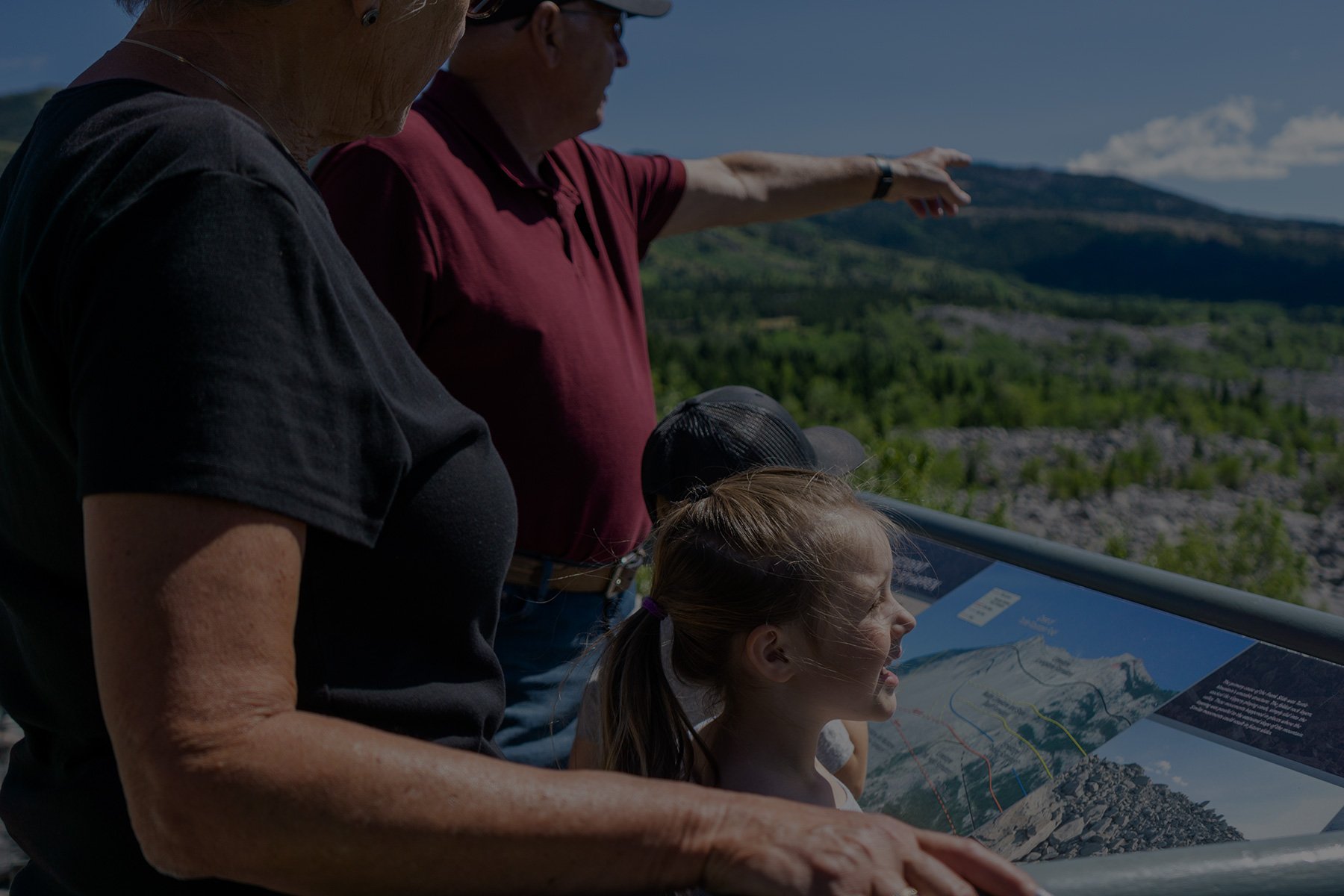
Early nomadic peoples included the Clovis culture evidenced by tools found near Frank that are possibly 11,000 years old.
Exciting stories
The Crowsnest Pass has yielded evidence of prehistoric life long before the landscape looked as it does today. In 1981 some Pass schoolboys found one of the best-preserved Tyrannosaurus Rex skulls known; nicknamed Black Beauty, a replica is on display in the Frank Slide Interpretive Centre. A ten thousand year old buffalo skull was found near Bellevue while excavating for a new sewer line in 1975.
Evidence of humans in the Crowsnest Pass abounds after the recession of continental glaciers about 11,000 years ago. In fact, the Crowsnest Pass has the richest archaeology of anywhere in the Canadian Rockies, possibly because the abrupt intersection of plains and mountain ecosystems made for good hunting, the wide low-gradient pass provided a convenient route for trade between tribes, and strong chinook winds made for shorter winters. Archaeological sites are often found on high, sunny south-facing terraces such as at Bellevue, or at comfortable campsites such as at the Crowsnest Lake dancehall site where seasonal occupation can be traced back 8,500 years. There are also a great number of ancient Vision Quest sites on hilltops and mountain summits, typically facing sacred mountains such as Crowsnest Mountain. In summer the Crowsnest Pass was a good place to fish or hunt big game such as sheep and mountain buffalo which could be driven into marshes, ravines or human-made corral traps and killed. In winter people followed the game into the foothills and plains.
Early nomadic peoples included the Clovis culture evidenced by tools found near Frank that are possibly 11,000 years old. The Old Cordilleran culture from 8000 to 7000BCE are in evidence near Burmis, followed by the Agate Basin culture found at fourteen sites in the Pass. The Mummy Cave culture arrived in the Pass around 4000BCE, followed by the Pelican Lake culture which arrived around 1000BCE. These peoples traded goods and materials with other tribes, and it is known that they quarried chert on the Livingstone Ridge over a period of perhaps six thousand years. The K’tunaxa (Kutenai) and Piikani (Peigan) arrived perhaps 1500 years ago and persisted until decimated by Smallpox in about 1730, after which the Crowsnest Pass seems to have been shunned by native peoples.
The first European explorers were soon followed by a few ranchers and hunters, but it was the discovery of coal deposits in the early 1900s that would result in the establishment of towns and change the face of the Pass.
In 1981 some Pass schoolboys found one of the best-preserved Tyrannosaurus Rex skulls known; nicknamed Black Beauty, a replica is on display in the Frank Slide Interpretive Centre.
Crowsnest Pass Buildings Heritage
Click here to explore history through the different parts of the Municipality of Crowsnest Pass with old and new photos of buildings and their stories.


